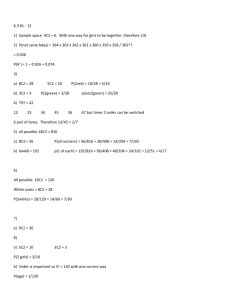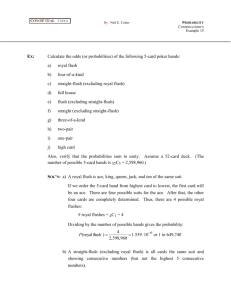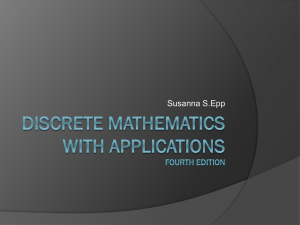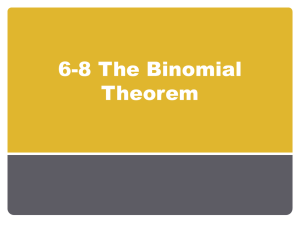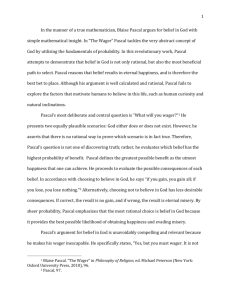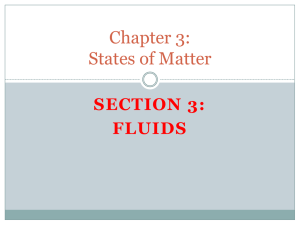18 Pascal and Binomial Theorem
advertisement
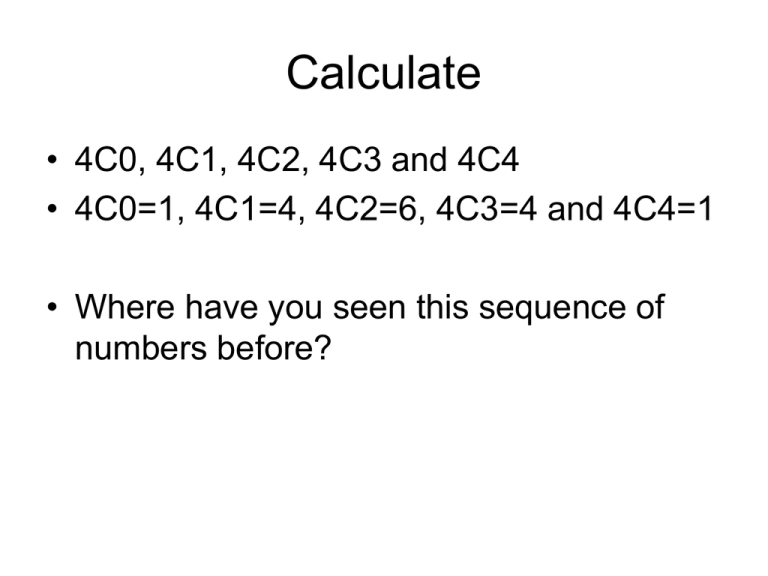
Calculate • 4C0, 4C1, 4C2, 4C3 and 4C4 • 4C0=1, 4C1=4, 4C2=6, 4C3=4 and 4C4=1 • Where have you seen this sequence of numbers before? Pascal’s Triangle Revisited 0C0 1C0 2C0 3C0 4C0 2C1 3C1 4C1 1C1 2C2 3C2 4C2 3C3 4C3 4C4 nth line nC0 nC1 nC2 etc… (starts on the 0th line) Implication: Pascal’s Formula 0C0 1C0 2C0 3C0 4C0 1C1 2C1 3C1 4C1 2C2 3C2 4C2 3C3 4C3 4C4 Notice that each entry is equal to the sum of 2 entries from a proceeding row. For example: 4C2=3C1 + 3C2 This is known as Pascal’s Formula: nCr=n-1Cr-1 + n-1Cr Binomial Theorem Do you see a pattern in the coefficients? Pascal’s Triangle 1 1 1 1 2 1 1 1 1 6 3 3 4 5 1 6 10 15 1 4 10 20 1 5 15 1 6 1 nth line nC0 nC1 nC2 etc… (starts on the 0th line) Example: Expand (x+y)6 • Try it yourself, use row 6 from Pascal’s Triangle (the seventh row counting from the top) or 6C0, 6C1 … 6C6 as the coefficients. Another Example 1 4 (2 x ) y HINT: expand (a+b)4 then sub in 2x for a and 1/y for b. Practice • Page 293 • Questions 1 to 12
